Shannon Zejiang Shen
SelfCite: Self-Supervised Alignment for Context Attribution in Large Language Models
Feb 13, 2025



Abstract:We introduce SelfCite, a novel self-supervised approach that aligns LLMs to generate high-quality, fine-grained, sentence-level citations for the statements in their generated responses. Instead of only relying on costly and labor-intensive annotations, SelfCite leverages a reward signal provided by the LLM itself through context ablation: If a citation is necessary, removing the cited text from the context should prevent the same response; if sufficient, retaining the cited text alone should preserve the same response. This reward can guide the inference-time best-of-N sampling strategy to improve citation quality significantly, as well as be used in preference optimization to directly fine-tune the models for generating better citations. The effectiveness of SelfCite is demonstrated by increasing citation F1 up to 5.3 points on the LongBench-Cite benchmark across five long-form question answering tasks.
SciRIFF: A Resource to Enhance Language Model Instruction-Following over Scientific Literature
Jun 10, 2024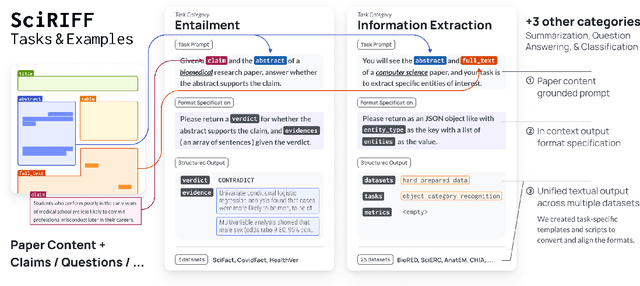
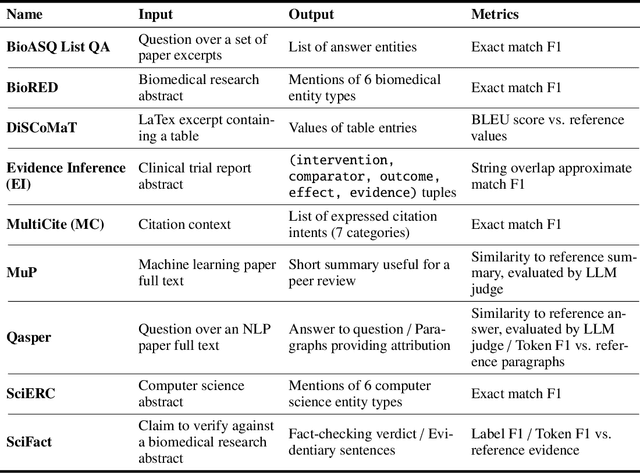


Abstract:We present SciRIFF (Scientific Resource for Instruction-Following and Finetuning), a dataset of 137K instruction-following demonstrations for 54 tasks covering five essential scientific literature understanding capabilities: information extraction, summarization, question answering, claim verification, and classification. SciRIFF demonstrations are notable for their long input contexts, detailed task specifications, and complex structured outputs. While instruction-following resources are available in specific domains such as clinical medicine and chemistry, SciRIFF is the first dataset focused on extracting and synthesizing information from research literature across a wide range of scientific fields. To demonstrate the utility of SciRIFF, we develop a sample-efficient strategy to adapt a general instruction-following model for science by performing additional finetuning on a mix of general-domain and SciRIFF demonstrations. In evaluations on nine held-out scientific tasks, our model -- called SciTulu -- improves over a strong LLM baseline by 28.1% and 6.5% at the 7B and 70B scales respectively, while maintaining general instruction-following performance within 2% of the baseline. We are optimistic that SciRIFF will facilitate the development and evaluation of LLMs to help researchers navigate the ever-growing body of scientific literature. We release our dataset, model checkpoints, and data processing and evaluation code to enable further research.
A Design Space for Intelligent and Interactive Writing Assistants
Mar 26, 2024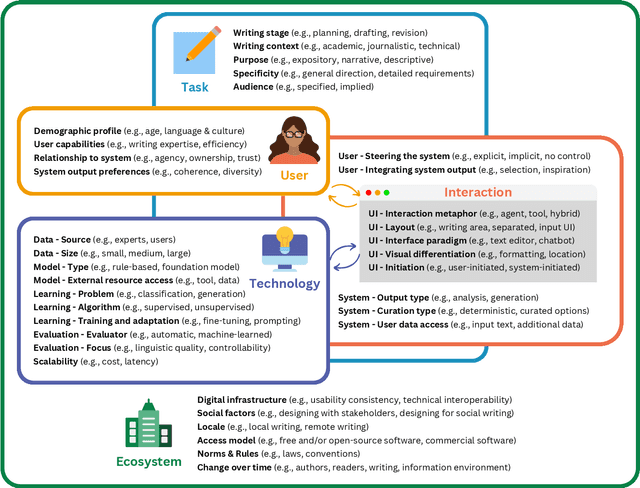
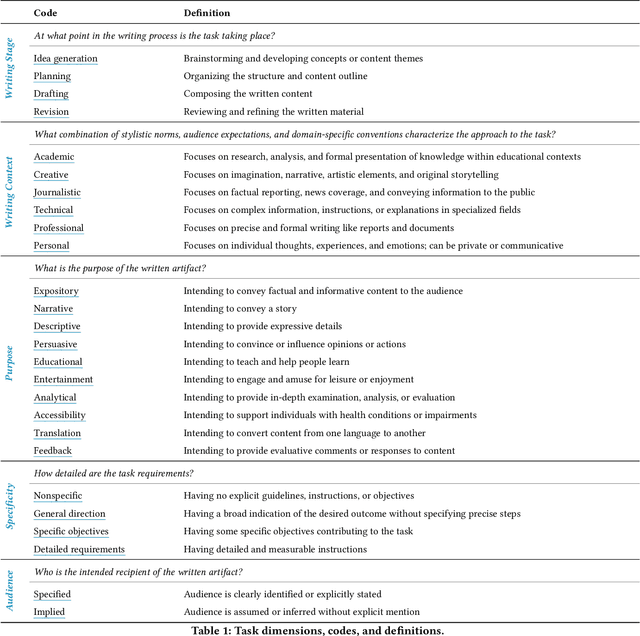
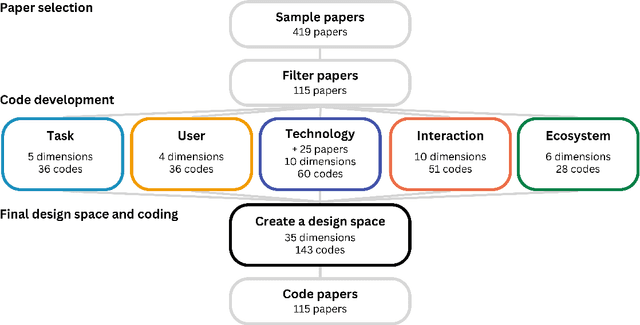
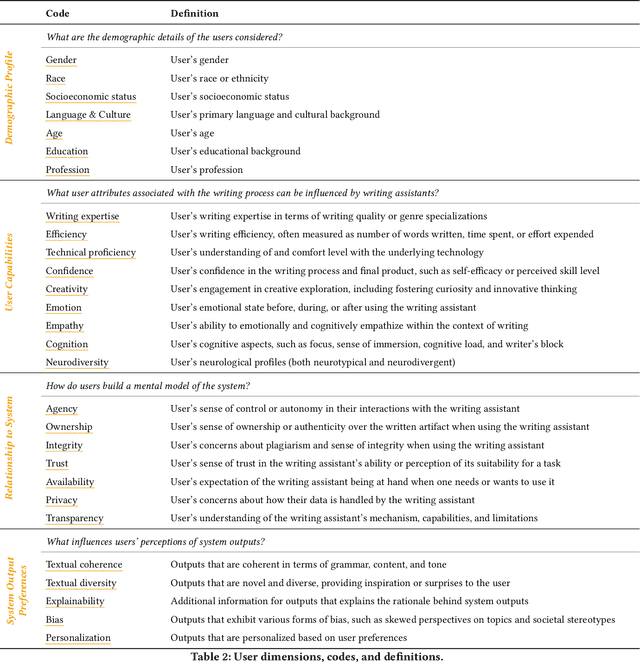
Abstract:In our era of rapid technological advancement, the research landscape for writing assistants has become increasingly fragmented across various research communities. We seek to address this challenge by proposing a design space as a structured way to examine and explore the multidimensional space of intelligent and interactive writing assistants. Through a large community collaboration, we explore five aspects of writing assistants: task, user, technology, interaction, and ecosystem. Within each aspect, we define dimensions (i.e., fundamental components of an aspect) and codes (i.e., potential options for each dimension) by systematically reviewing 115 papers. Our design space aims to offer researchers and designers a practical tool to navigate, comprehend, and compare the various possibilities of writing assistants, and aid in the envisioning and design of new writing assistants.
Learning to Decode Collaboratively with Multiple Language Models
Mar 06, 2024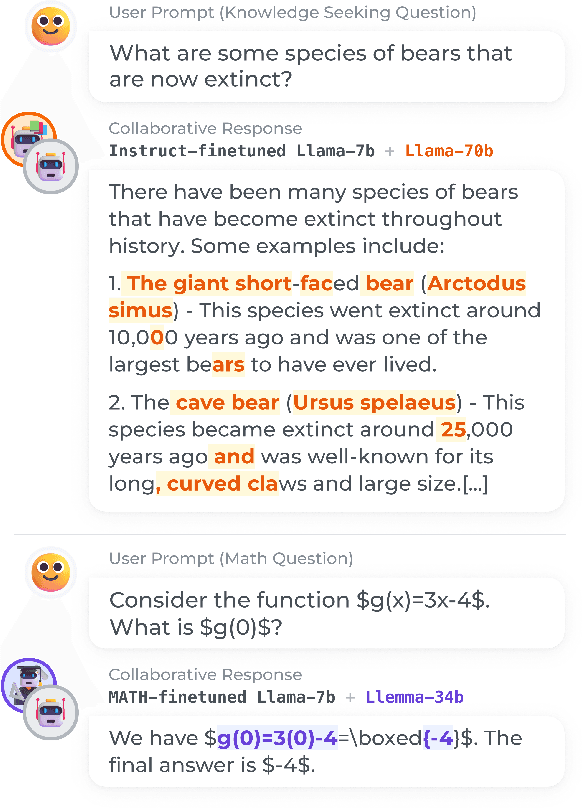



Abstract:We propose a method to teach multiple large language models (LLM) to collaborate by interleaving their generations at the token level. We model the decision of which LLM generates the next token as a latent variable. By optimizing the marginal likelihood of a training set under our latent variable model, the base LLM automatically learns when to generate itself and when to call on one of the ``assistant'' language models to generate, all without direct supervision. Token-level collaboration during decoding allows for a fusion of each model's expertise in a manner tailored to the specific task at hand. Our collaborative decoding is especially useful in cross-domain settings where a generalist base LLM learns to invoke domain expert models. On instruction-following, domain-specific QA, and reasoning tasks, we show that the performance of the joint system exceeds that of the individual models. Through qualitative analysis of the learned latent decisions, we show models trained with our method exhibit several interesting collaboration patterns, e.g., template-filling. Our code is available at https://github.com/clinicalml/co-llm.
A Data-Centric Approach To Generate Faithful and High Quality Patient Summaries with Large Language Models
Feb 23, 2024



Abstract:Patients often face difficulties in understanding their hospitalizations, while healthcare workers have limited resources to provide explanations. In this work, we investigate the potential of large language models to generate patient summaries based on doctors' notes and study the effect of training data on the faithfulness and quality of the generated summaries. To this end, we develop a rigorous labeling protocol for hallucinations, and have two medical experts annotate 100 real-world summaries and 100 generated summaries. We show that fine-tuning on hallucination-free data effectively reduces hallucinations from 2.60 to 1.55 per summary for Llama 2, while preserving relevant information. Although the effect is still present, it is much smaller for GPT-4 when prompted with five examples (0.70 to 0.40). We also conduct a qualitative evaluation using hallucination-free and improved training data. GPT-4 shows very good results even in the zero-shot setting. We find that common quantitative metrics do not correlate well with faithfulness and quality. Finally, we test GPT-4 for automatic hallucination detection, which yields promising results.
 Add to Chrome
Add to Chrome Add to Firefox
Add to Firefox Add to Edge
Add to Edge